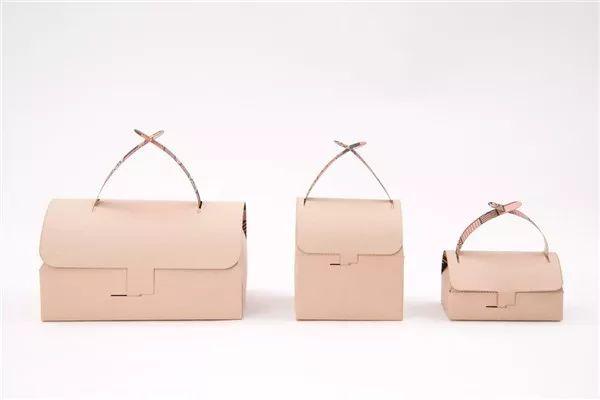“小生意”太注重眼前利益,步步为营;大品牌有远见卓识,成就无可匹敌。黄剑煌推出外卖市场新品——“三点全”,三分钟用餐,现场烹饪;面点启动——c24全职餐饮模式,建立新的产品线、零售、线上线下的整合;海底捞推出自家品牌饮料,乳酸菌饮品新品类,主要用于火锅。品牌都在忙着拓展产业链,从产品到零售,从线下到线上,可以说是全方位的。
1. 突出特点,注重包装操作
La razón por la cual una marca deja una impresión en el cliente, algo que puede escuchar o ver, es que esta marca debe ser diferente.

Frente a la aparición repentina de nuevos estilos de comercio minorista, las características distintivas de la embalaje de alimentos también son una especie de "habilidad de permanecer". Para productos para llevar, la embalaje único puede hacer una impresión profunda en los clientes. Teniendo en cuenta el grupo de consumidores de alimentos para llevar: los trabajadores de cuello blanco que van al trabajo suelen ser alimentos para llevar para una persona. Es necesario capturar el corazón de los consumidores a través de la embalaje. Embalajes finos, experiencia meticulosa, consejos de servicio cálidos, inmediatamente suman 5 puntos por el sabor de los platos. Muchos puntos de venta de alimentos y bebidas están decididos a romper la imagen de la embalaje para llevar y construir su propia embalaje de marca para resaltar el estilo y el carácter. Cabe destacar que esta es una buena estrategia para el mismo categoría de alimentos y bebidas, pero frente a la competencia diferenciada, cuando todas las categorías de alimentos para llevar están buscando avances en la embalaje para llevar, inevitablemente brindará a los consumidores una sensación de frescura deslumbrante.
2, enfocarse en el servicio, aumentar la experiencia del usuario
El servicio de comida tradicional no tiene un sistema de servicio de comida para llevar formado. Utiliza la entrega directa del empleado, el tiempo de entrega y el sabor de la comida no son fáciles de controlar, y la experiencia de servicio de la entrega es menos considerada. Sin embargo, la era del "Tmall" de la comida para llevar está llegando. Con la reducción continua de restaurantes, la segunda cadena de comida, la comida para llevar, no solo en la imagen, sino también en el servicio, presta especial atención a la experiencia de entrega y mejora la buena voluntad del usuario.

La imagen del embalaje para la comida a domicilio resalta la individualidad y el estilo, dejando una impresión en el cliente. Una vez que se imitan el mismo tipo, ¿cómo debe defenderse la empresa de catering? El punto de inflexión está en el servicio, y la experiencia del usuario es irrepetible. Por un lado, el sabor de los platos, por otro, la experiencia más directa personal que el cliente toca, que es imposible de copiar e imitar para cualquier marca. Desde este punto de vista, la cotización de Haidilao es una noticia gratificante, pero también envidiada por muchos dueños de negocios: hacer lo mismo que la comida, ¿por qué él puede cotizar en bolsa? Los profesionales de la catering saben que Haidilao gana con el servicio. Utiliza el modelo de gestión de amebas, que es preciso para todos y sirve a cada cliente. La experiencia del usuario no es solo el sabor de la sopa de mariscos, sino también el servicio detallado.
3. Marca derivada, diversificación del riesgo de capital
If a store relies on a single mainline product, it will soon be squeezed out by other brands. Looking at the old-fashioned food and beverage brands, you will find that the long-lasting secret is not only the signature dishes, but also the clever combination between the main and the side dishes. After all, we don't just order a signature dish when we experience it. Huang Genghuang founder Huang Geng can do his best for the new product "three-point full", three years of research, taste, packaging, technology and try again, so that today's live cooking, standard 3-minute meal. The same is true for meeting facets, founder Song Qi said that the business model of c24 has been in the exploration stage. Meet the face-to-face 24-hour product line, focusing on the product features of each period of operation, in order to change the customer's old impression, retain customers, and form a new impression as the goal. Japanese catering is recognized as the best, only because of the adherence to a standard "only one brand of catering companies is dangerous." Although a single brand has the advantage of simplification and concentration, once a consumer rejects this unique brand, the company will be fatally hurt. The strategy of Japanese catering is to launch 1-2 new stores each year to form a diversified risk asset structure. Multi-brand strategy has become a new battlefield. On the one hand, businesses can continue to innovate. On the other hand, multi-brands seem to be more in line with the stomachs of young consumers.
4. Tres elementos de la gestión de catering: calidad + servicio + experiencia
What is the secret of catering business? Every diners have their own answers. Practice knowing the truth, blindly speaking and blindly doing can not be explored. Observing the restaurants with good business, we can easily find that the combination of quality, service and experience is the foundation of a restaurant that is unbeaten, but it never stops at three elements. Mass consumer products are the first. Once the products are identified, once the local tastes are met, the customer repurchase rate is not a problem. Kang Changxi, the founder of "Fang Datong Hu spicy soup" who intends to change its name to "Xiaoxige", once said to reporters that "the same shop is easy to die. To make food and beverages return to the essence, put clean in the first place, and then improve the service." ." Catering operations need to find out a set of their own style of play. Mature business methods can be used for reference. How to explore their own style of play can stand in an undefeated realm. Only those who are truly suitable for themselves and create their own characteristics can retain customers and form brand influence.

